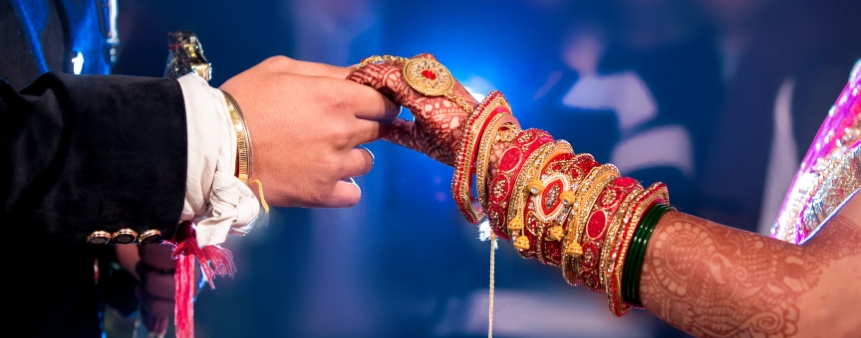Talk to India's best Astrologers
First Consultation at ₹1 only
Login
Enter your mobile number
The Indian bride is also known as Dulhan in North Indian weddings. In Tamil culture, she is called Manamagal; in Kannada, she is known as Vadhu, Nababadhu in Bengali cultures, Vadhuvu in Telugu, Koina in Assamese weddings, and Sokkele in Konkani traditions. She is considered to be a representation of Goddess Laxmi, and thus she holds high importance during the entirety of wedding ceremonies. According to popular belief, the bride will bring wealth, fortune and prosperity to the family.
Various rituals are associated with the bride, most of which are shared across Indian weddings. During the marriage, the bride receives unbound blessings from everyone, especially from the married women of the household.
The bride is engaged in many customs, functions, and ceremonies in a Hindu wedding. The bride is considered an essential part of the wedding, alongside her husband.
Here are some traditions associated with the bride:
Bridal Henna Application
Before her big day, the bride's family organise a Mehendi ceremony for her and all the other female members of the family. First, intricate designs using henna are put on the arms and legs of the bride. In Indian weddings, it is believed that if the colour of henna comes out to be dark, then the husband will be very loving.
Bridal entry to the Mandap
The bride's entry is an extravagant affair where she is led to the Mandap by her brothers, cousins, or friends. However, at South Indian weddings, she's escorted by her maternal uncles and aunts.
Kanyadaan
During the Kanyadaan ceremony, the bride's father gives her away to her husband and asks him for her safety and security.
Vidai
The Vidai ceremony is understandably the most emotional and painful ceremony for the bride and her family. This ceremony symbolises the final stage of the wedding, where she bids farewell to her parents and leaves for her marital home. Before leaving, it is customary for the bride to throw handfuls of rice and coins over her shoulders towards her parents as a symbolic gesture of repaying their kindness to her.
Grihapravesh

Before entering her marital home, the bride overturns a pot of uncooked rice using her right foot. Following this, she is welcomed by an aarti performed by the groom's mother.
Traditionally, the bride is seen to wear a red saree, lehenga, or suit on her wedding day and other customary attires on the other days of certain rituals. For example, in a traditional Bengali wedding, the bride wears a red Benarasi or silk saree and wears traditional headgear.
After the wedding rituals get over, she puts sindoor or vermillion on her forehead, wears a mangalsutra, and a set of bangles, also known as the Chooda. All of these are considered the symbols of her marriage.
In any wedding, the Dulhan is the highlight besides her Dulha. When you get invited to a wedding ceremony, it is customary to carry a token of appreciation for the couple and their union. If you often worry yourself sick over what to buy for the bride, here are some solutions: if you know your bride well, you should gift her something of her interest. However, if you have to buy something without personally knowing the bride, then unrestricted gifts are the best ways to impress her. You can choose to gift make-up kits, jewellery boxes, shoes, all paid spa sessions, high-end perfumes, beautiful attires, and even gadgets! These gifts are an authentic way to win your bride's heart.